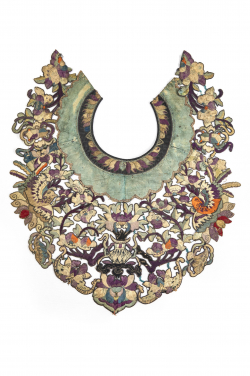The University of Hong Kong (HKU) launches a digital museum featuring various artisan embroidery techniques employed by the Miao people in Guizhou, a province in southwest China. The digital museum is the output of a Knowledge Exchange (KE) project supported by the HKU KE Fund granted by the University Grants Committee. It is collaboratively built by HKU's Faculty of Education, HKU Libraries and Guizhou Lanmama Museum of Intangible Cultural Heritage of Ethnic Minorities.
The digital museum contains 668 high-resolution photographs of 109 items selected from collections owned by the Guizhou Lanmama Museum of Intangible Cultural Heritage of Ethnic Minorities. As a traditional craft, Miao embroidery was listed in the inaugural register of China's National Intangible Cultural Heritage in 2006. It involves distinctive craftsmanship and also embodies the history, culture and lifestyle of ethnic minority communities. The items, dating from as early as the Qing dynasty, are presented in three categories: "Weaving", "Dyeing", and "Embroidery", which are organised according to the procedure involved in each of the crafts. 28 exhibits were also built to demonstrate items made by different embroidery techniques including knot stitch, counted thread stitch, and metal gimp stitch. Items were collected from ethnic minority groups living in 14 counties in Guizhou province. The items include highly detailed costumes, purses, exquisite belly bands, baby-carrying belts, baby shoes, hats and vibrantly coloured bibs.
The Principal Investigator of the project is Dr Hu Xiao, an Associate Professor in the Faculty's Academic Unit of Human Communication, Development, and Information Sciences who specialises in information science and cultural heritage education. As Dr Hu remarked, "China is known for its rich history and culture. The unique and diverse cultural heritage of ethnic minority people in China is disappearing due to natural and man-made causes. Digitisation provides a solution for preserving and promoting cultural heritages. This KE project digitises the unique cultural heritages of ethnic minority people in Guizhou, making these precious cultural heritage items accessible online to international audiences while also raising awareness and appreciation of intangible Chinese cultural heritage."
The digital museum is a permanent collection hosted in the HKU Library. You are cordially invited to visit this digital museum at https://lanmama.lib.hku.hk.
Please download the high resolution photos of exhibits (see Photos) at https://web.edu.hku.hk/press.







